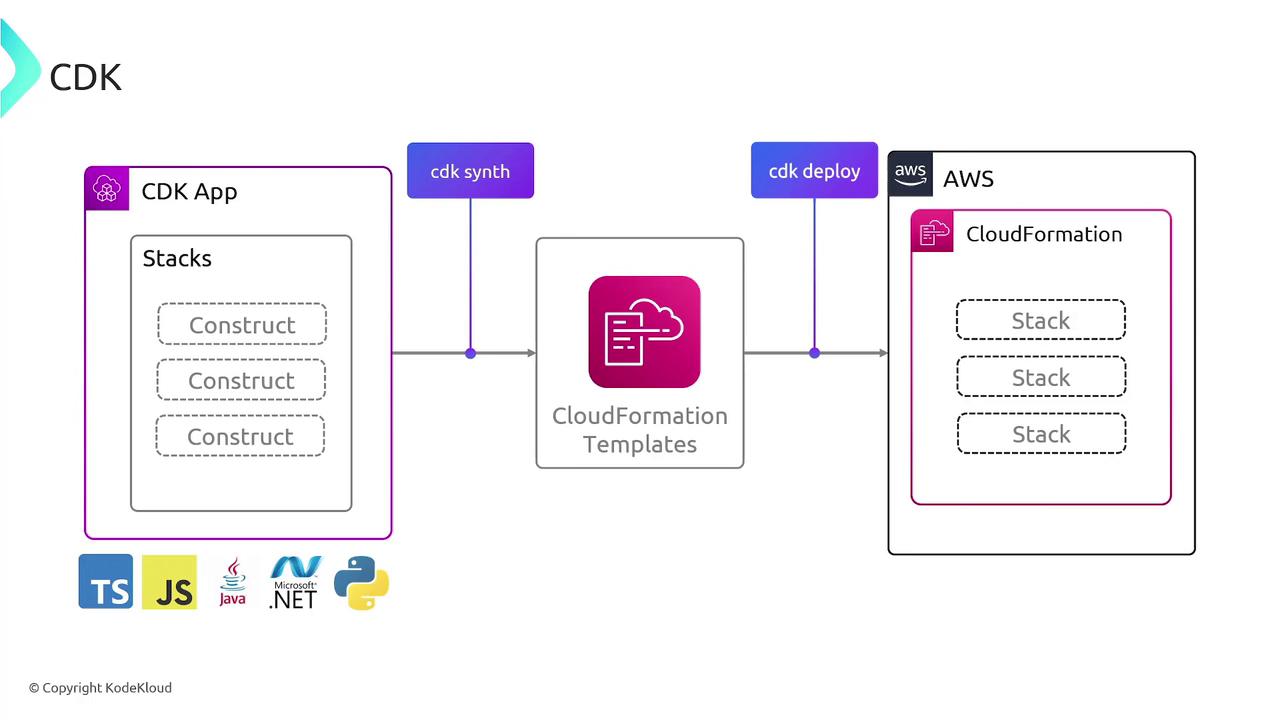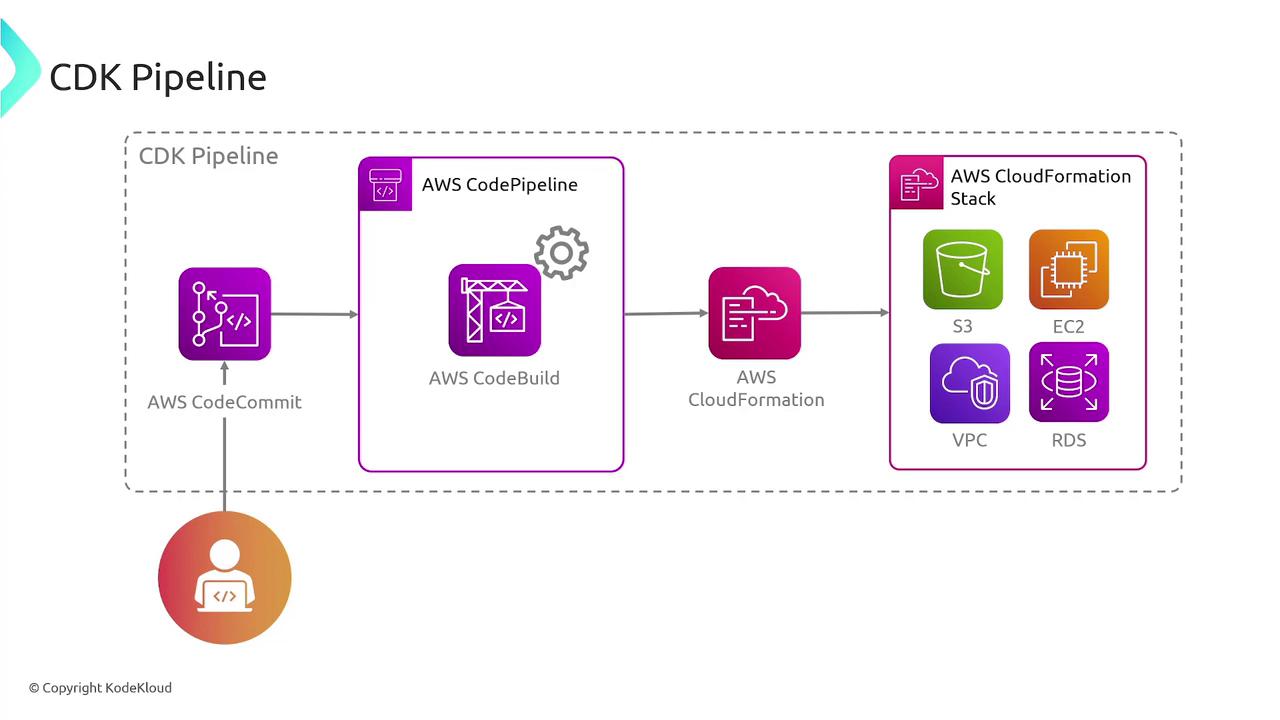AWS Solutions Architect Associate Certification
Services Management and Governance
CDK
AWS Cloud Development Kit (CDK) is a powerful Infrastructure as Code (IaC) tool that enables developers to define AWS resources using familiar programming languages such as Python, JavaScript, Java, or .NET. Unlike AWS CloudFormation—which requires JSON or YAML templates—CDK lets you leverage each language’s ecosystem for better flexibility, access to third-party libraries, and enhanced testing capabilities.
With a CDK app, you employ pre-configured constructs that bundle best practice defaults, expediting the onboarding process. Although you author your infrastructure in code, CDK synthesizes this code into standard CloudFormation templates. In other words, running the synthesis command (CDK synth) translates your code into CloudFormation templates that can then be deployed using CDK deploy.

Key Information
CDK enables a more dynamic and maintainable approach to infrastructure management by bridging the gap between application code and cloud resource definitions.
Features and Benefits of AWS CDK
AWS CDK provides several advantages for managing your infrastructure declaratively through code:
- Transparency and Predictability: Codified infrastructure is transparent, repeatable, and predictable, ensuring reliable resource provisioning.
- Code Reusability: Reuse custom components across projects, share them with the community, and take advantage of community-provided constructs.
- Rich AWS Construct Library: Gain instant access to a diverse range of pre-built constructs that represent various AWS resources.
- Automated Synthesis: Automatically generate CloudFormation templates from your application code, simplifying deployment processes.
- Environment Agnosticism: Develop once and deploy across multiple environments by parameterizing your resources for different configurations.
![]()
A summary of the key features is provided below:
| Feature | Benefit | Example |
|---|---|---|
| Declarative Infrastructure | Simplifies resource management and provisioning | CDK constructs automatically generate CloudFormation templates |
| Component Reusability | Increases development efficiency and consistency | Reuse constructs across multiple applications |
| Rich AWS Library | Provides access to a wide array of ready-to-use components | Leverage constructs for Amazon S3, EC2, VPC, etc. |
| Automated Synthesis | Transforms code into deployable templates seamlessly | Use CDK synth to generate CloudFormation templates |
| Environment Agnosticism | Ensures seamless deployment across different environments | Parameterize constructs for development, staging, and production |
Integrating AWS CDK with CI/CD
AWS CDK integrates seamlessly with AWS services to build robust CI/CD pipelines. For instance, after updating your CDK application, you can commit your changes to AWS CodeCommit. This action triggers a pipeline in AWS CodePipeline that performs the following steps:
- Executes CDK synth to generate CloudFormation templates.
- Runs unit tests to validate changes.
- Builds artifacts and packages your application.
- Deploys the resulting CloudFormation templates to provision AWS resources.

This integration ensures a smooth, automated, and efficient deployment process for your CDK applications, taking full advantage of AWS CodeCommit, CodePipeline, CodeBuild, and CloudFormation.
Deployment Note
Always validate your CloudFormation templates (generated via CDK synth) in a test environment before deploying to production. This precaution helps prevent potential misconfigurations from causing downtime or resource misallocation.
For more detailed information on AWS CDK and best practices, be sure to check out the AWS CDK Documentation.
Watch Video
Watch video content